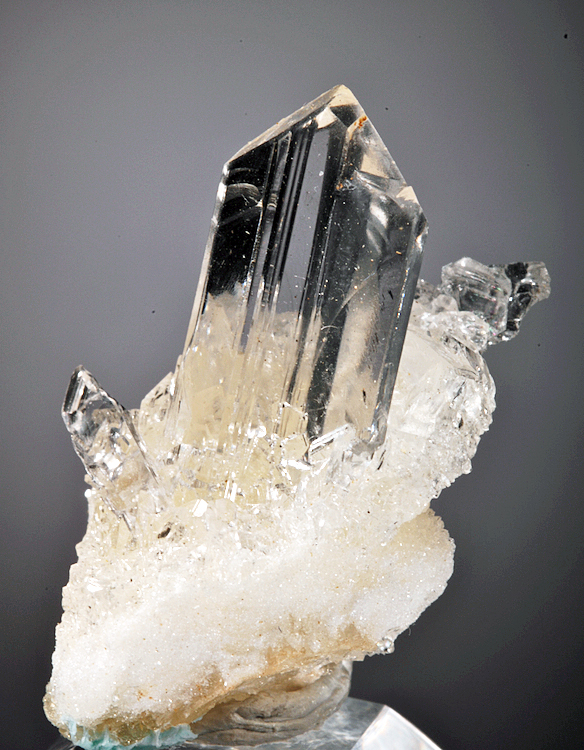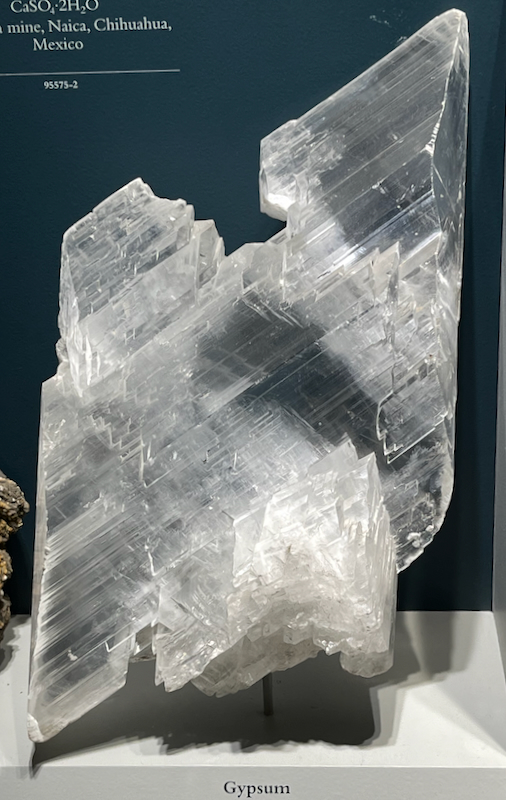Selenite and Satin Spar
The fact that you can find it carved into wands and crystal balls and other shapes in stores and at rock shows means that gypsum is pretty common. Two of the most common varieties of gypsum are selenite and satin spar. Selenite is a clear variety, and satin spar is a satiny translucent variety whose crystals are made of tightly packed fibers. Appropriately enough for its mystical reputation, the name selenite comes from the Greek word for moon, because ancient people thought the mineral matched the cycles of the moon. On the other hand, the word “spar” in satin spar just refers to either how pointy the crystals are or how they break into nice pieces, depending on who you ask. In areas where water is very saturated with minerals, such as salty oceans and lakes—like the Great Salt Lake in Utah, for example—when the water evaporates, it can form crystals. Similar crystals can form in sedimentary rock when water and minerals there combine. If the minerals in either case include calcium (Ca) and sulfur (S), gypsum (which is calcium, sulfur, and water (H2O)) crystals can form. Gypsum isn’t just a “magical” mineral, it has very practical uses. When you combine ground-up gypsum with water, it makes plaster, and the name gypsum comes from the Greek word for plaster. The reason it works well in plaster is that when it dries out, it also hardens—you might even say it recrystallizes—but not into crystal shapes, it just stays flat. Gypsum is also used to make drywall, which is what almost all walls are made of these days, and it provides a nice smooth, white surface that’s easy to paint. And, finally, gypsum is also used in fertilizer for crops that need calcium or sulfur.
| Formula | Group or Type | Shape | Hardness | Specific Gravity | Streak | Luster |
|---|---|---|---|---|---|---|
| Ca(SO4)·2H2O | — | Monoclinic | 2 | 2.312–2.322 | White | Vitreous to silky |


